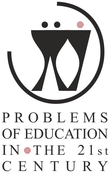EDUCATION AND POVERTY, RELATIONSHIP AND CONCERNS. A CASE FOR KENYA
| Title | EDUCATION AND POVERTY, RELATIONSHIP AND CONCERNS. A CASE FOR KENYA |
| Publication Type | Journal Article |
| Year of Publication | 2011 |
| Authors | Julius, MK, Bawane, J |
| Journal | Problems of Education in the 21st Century |
| Volume | 32 |
| Start Page | 72-85 |
| Date Published | July/2011 |
| Type of Article | Original article |
| ISSN | 1822-7864 |
| Other Numbers | ICID: 952763 |
| Keywords | economic growth, education |
| Abstract | Poverty has many dimensions and does not merely entail low levels of income or expenditure. According to Sen (1992), poverty is the lack of capability to function effectively in society. Inadequate education can thus be considered a form of poverty. Education is widely accepted as the main exit route from poverty. It is the backbone of growth and development of individuals and the nation. However, its achievement continues to elude many who are poverty stricken. This paper articulates the issues of education and poverty which is related to that of chicken-egg relationships. The study used secondary data from eight provinces in Kenya. The study correlated the poverty headcount with the educational indicators. It emerged from the data that provinces which had less poverty levels (Central-30.4% and Nairobi 29.5%) experienced high literacy rate, high enrolment and low dropout rate, while regions which had higher levels of poverty headcount (North Eastern-73.9% and Coast-69.7%) experienced low literacy rates, and poor academic performance. The study Concluded that extreme poor are denied access to education, poverty hampers learning in developing countries through poor nutrition, health, home circumstances, quality, costs and inadequate resources for education. The study recommends the government to introduce/re-introduce/strengthen school feeding programme, subsidize |
| URL | https://oaji.net/articles/2014/457-1406541577.pdf |
| DOI | 10.33225/pec/11.32.72 |
| Refereed Designation | Refereed |
| Full Text |
